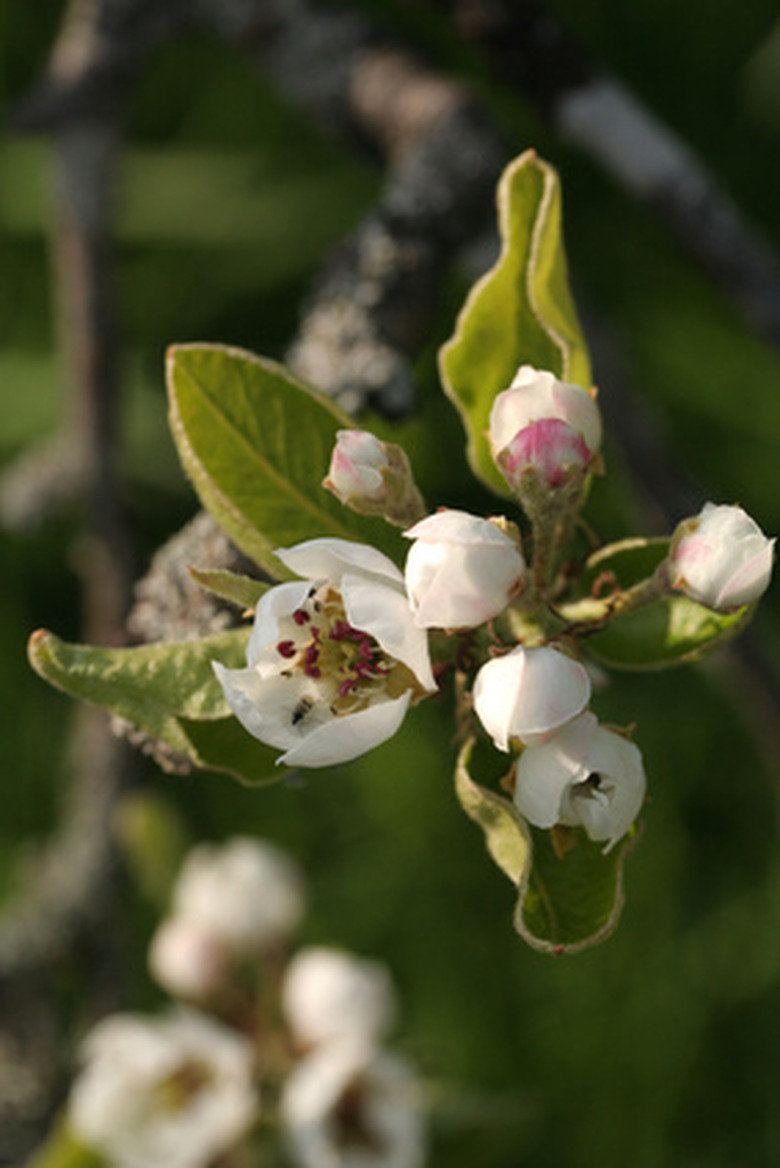Cleveland Pear Tree Diseases
Cleveland pear trees are flowering ornamental trees that grow in a semi-oval, symmetrical shape. The trees bloom with white flowers during spring and reach a mature height of 30 to 40 feet. Cleveland pear trees are ideal for small to medium sized areas and adapt easily to most soil types. The trees have a moderate level of resistance to a number of common tree diseases but are not entirely immune to common diseases of ornamental trees.
Fire Blight
Fire blight is one of the most common bacterial diseases of ornamental pear trees and is caused by the bacterium Erwinia amylovora. The disease mostly occurs during spring. Heavy application of fertilizer increases tree susceptibility to the disease, which is characterized by the appearance of blighted foliage and blossoms near stem ends. As the disease progresses, foliage rapidly wilts and browns, appearing fire-scorched or frost-damaged. Choose disease-resistant varieties to prevent the disease. If fire blight is present, prune away infected tree parts. Chemical control methods are rarely successful, but spraying trees with streptomycin prior to bloom time is often effective.
Anthracnose
Anthracnose is a foliar disease of ornamental trees including the ornamental pear. The disease afflicts the leaves and twigs of the tree during cooler, wet weather and is characterized by the appearance of leaf spots, twig dieback and cankers on branches. The best preventive measure against anthracnose is to plant disease-resistant tree varieties. Fungicides are effective before and after the infection occurs.
Leaf Spot
Leaf spot is a fungal disease of ornamental pears caused by a variety of different fungi. The disease appears in the form of scattered but definite, oval to round spots on the leaves. Leaf spot is most evident during summer and persists during periods of light and frequent rainfall, humidity and fog. Leaf spot leads to premature defoliation in trees, gradually weakening the tree and stunting growth. The presence of leaf spot increases tree susceptibility to a number of other diseases such as bark borers and winter injury. Preventive measures include the application of ammonium nitrate fertilizer and pruning trees to improve air circulation.
